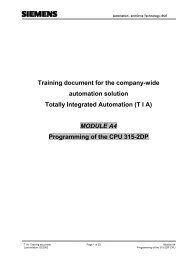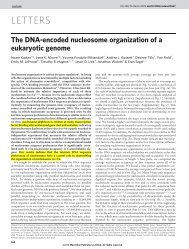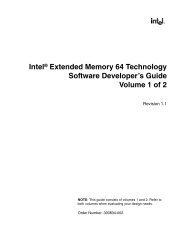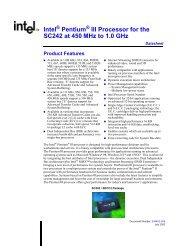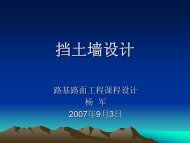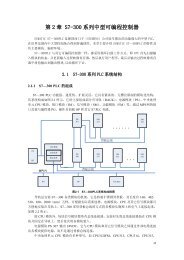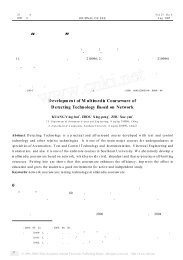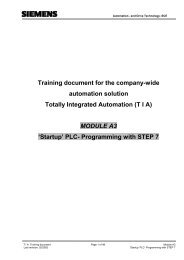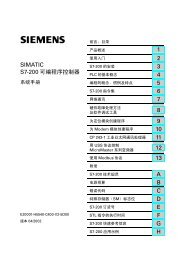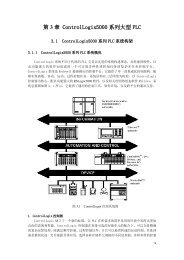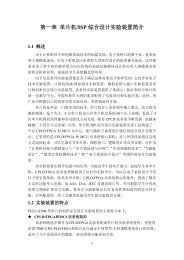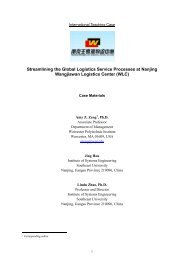Intel® 865G/865GV Chipset Datasheet - download.intel.nl - Intel
Intel® 865G/865GV Chipset Datasheet - download.intel.nl - Intel
Intel® 865G/865GV Chipset Datasheet - download.intel.nl - Intel
You also want an ePaper? Increase the reach of your titles
YUMPU automatically turns print PDFs into web optimized ePapers that Google loves.
Functional Description5.4.4.2 Overlay PlaneThe overlay engine provides a method of merging either video capture data (from an external videocapture device) or data delivered by the processor, with the graphics data on the screen. The sourcedata can be mirrored horizontally, vertically, or both.Source/Destination Color Keying/ChromaKeyingOverlay source/destination ChromaKeying enables blending of the overlay with the underlyinggraphics background. Destination color keying/ChromaKeying can be used to handle occludedportions of the overlay window on a pixel by pixel basis that is actually an underlay. DestinationChromaKeying would o<strong>nl</strong>y be used for YUV passthrough to TV. Destination color keying supportsa specific color (8- or 15-bit) mode as well as 32-bit alpha blending.Source color keying/ChromaKeying is used to handle transparency based on the overlay windowon a pixel-by-pixel basis. This is used when “blue screening” an image to overlay the image on anew background later.Gamma CorrectionTo compensate for overlay color intensity loss due to the non-linear response between displaydevices, the overlay engine supports independent gamma correction. This allows the overlay datato be converted to linear data or corrected for the display device when not blending.YUV-to-RGB ConversionThe format conversion can be bypassed in the case of RGB source data. The format conversionassumes that the YUV data is input in the 4:4:4 format and uses the full range scale.Maximum Resolution and FrequencyThe maximum frequency supported by the overlay logic is 170 MHz. The maximum resolution isdependent on a number of variables.Deinterlacing SupportFor display on a progressive computer monitor, interlaced data that has been formatted for displayon interlaced monitors (TV), needs to be de-interlaced. The simple approaches to de-interlacingcreate unwanted display artifacts. More advanced de-interlacing techniques have a large costassociated with them. The compromise solution is to provide a low cost but effective solution andenable both hardware and software based external solutions. Software based solutions are enabledthrough a high bandwidth transfer to system memory and back.Dynamic Bob and Weave. Interlaced data that originates from a video camera creates two fieldsthat are temporally offset by 1/60 of a second. There are several schemes to deinterlace the videostream: line replication, vertical filtering, field merging, and vertical temporal filtering. Fieldmerging takes lines from the previous field and inserts them into the current field to construct theframe – this is known as Weaving. This is the best solution for images with little motion; however,showing a frame that consists of the two fields will have serration or feathering of moving edgeswhen there is motion in the scene. Vertical filtering or “Bob” interpolates adjacent lines ratherreplicating the nearest neighbor. This is the best solution for images with motion; however, it willhave reduced spatial resolution in areas that have no motion and introduces jaggies. In absence ofany other deinterlacing, these form the baseline and are supported by the GMCH.174 <strong>Intel</strong> ® 82<strong>865G</strong>/82<strong>865G</strong>V GMCH <strong>Datasheet</strong>



